-
After six years of flying, Cherry Tan left her dream job as a flight attendant.
-
She decided to open a hawker stall with her husband in Singapore.
-
Despite the pay cut, she said the longer hours help her save more.
As a teenager, Cherry Tan knew she wanted to become a flight attendant.
She mapped out a plan to fulfill that dream. At 19, she applied for a cabin crew position at Singapore Airlines. When she was rejected, she temporarily switched gears to pursue a bachelor’s degree in hospitality business at the Singapore Institute of Technology. But the dream of becoming a flight attendant never went away, and she continued to apply after graduation.
After four years of rejection and on her 10th attempt, she got the job.
Tan spent the next six years flying around the world and exploring new countries every other day.
“Being a cabin crew member was the best time of my life,” Tan, now 29, told me, adding that she enjoyed the work-life balance it afforded.
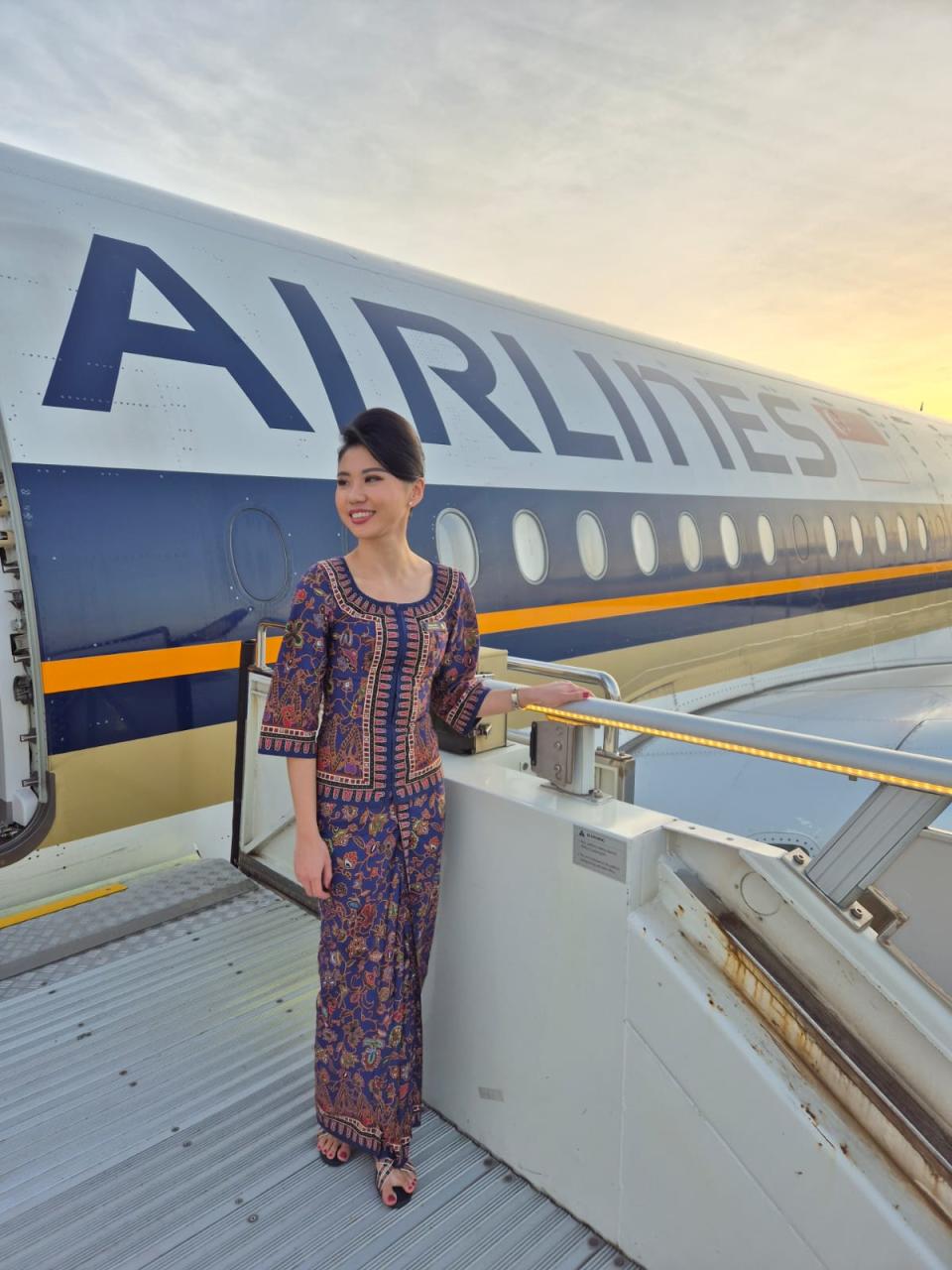

But toward the end of her fifth year, Tan was hungry for a change in her life. Flying began to feel mundane, and she was uncertain about the job stability and career progression of being a flight attendant, she said.
At the same time, her husband, Duncan Hsu, now 36, had been working as a chef in a hotel and wanted to start his own business. Tan saw this as an opportunity for them to open a hawker stall together in a kopitiam — an open-air coffee shop selling a variety of dishes at an affordable price in Singapore.
So in May, the couple invested 30,000 Singapore dollars, or around $23,000, of their own money to open a stall in the west of Singapore.
They named the stall Kiang Kiang Taiwan Teppanyaki and planned a menu inspired by a style of Japanese cooking that was introduced to Taiwan in the 1970s — “teppan” means “iron plate,” and “yaki” means “grilled.” Diners choose between steak, chicken, pork, or halibut, and then add either rice or noodles and additional sides.
As the dishes were inspired by her husband’s Taiwanese heritage, the meat is served with Taiwanese-style black pepper or mushroom sauce.
Trading a comfortable job for longer hours and lower pay
As a flight attendant at Singapore Airlines, Tan said she made around SG$6,000, or $4,600 a month, depending on the number of flights she embarked on. When she left her job to become a hawker, Tan estimated that she took a 50% pay cut.
But Tan simply saw her pay cut as part of the process. “This is not our end goal,” she said, adding that they plan to expand the business in the future. “So I just had to bite the bullet.”
And despite earning less, her bank account still grew because of her long hours as a hawker. As a flight attendant, Tan got around a day off after working for two or three days a week. She also spent more on food and shopping while traveling to different countries, she said.
Now, Tan works 12 hours a day, six days a week. “I don’t have time to spend my money elsewhere,” she said.
Tan said it took time to get used to working in the 147-square-foot stall space, which gets hot and stuffy when Hsu grills meat.
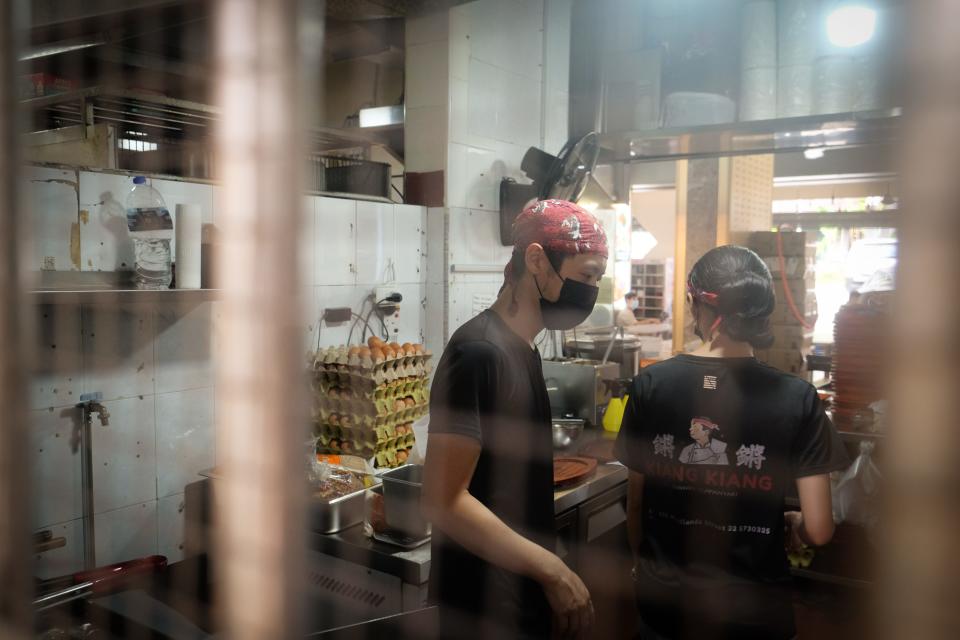

Her parents were against the career switch. “Even until today, they asked me why I had to give up a comfortable job,” she said.
No easy business to break into
The hawker business is challenging to succeed in. Although startup costs may be lower than those of other food and business enterprises, it is physically demanding and can yield narrow profits.
“There’s no guarantee you will succeed. People have failed. That’s the reality. If you don’t do your homework well, you don’t study your menu, you will fall very fast,” KF Seetoh, a food critic and the founder of Urban Hawker in New York City previously told BI. Urban Hawker is the first street food center in the US that features Singaporean hawker cuisine.
Despite the risks involved, Tan was confident in her decision. “I was not really concerned about whether the business would succeed because I have a lot of faith in my husband,” Tan said. She met Hsu in 2014 on an internship in Taiwan. The pair got married in 2019.
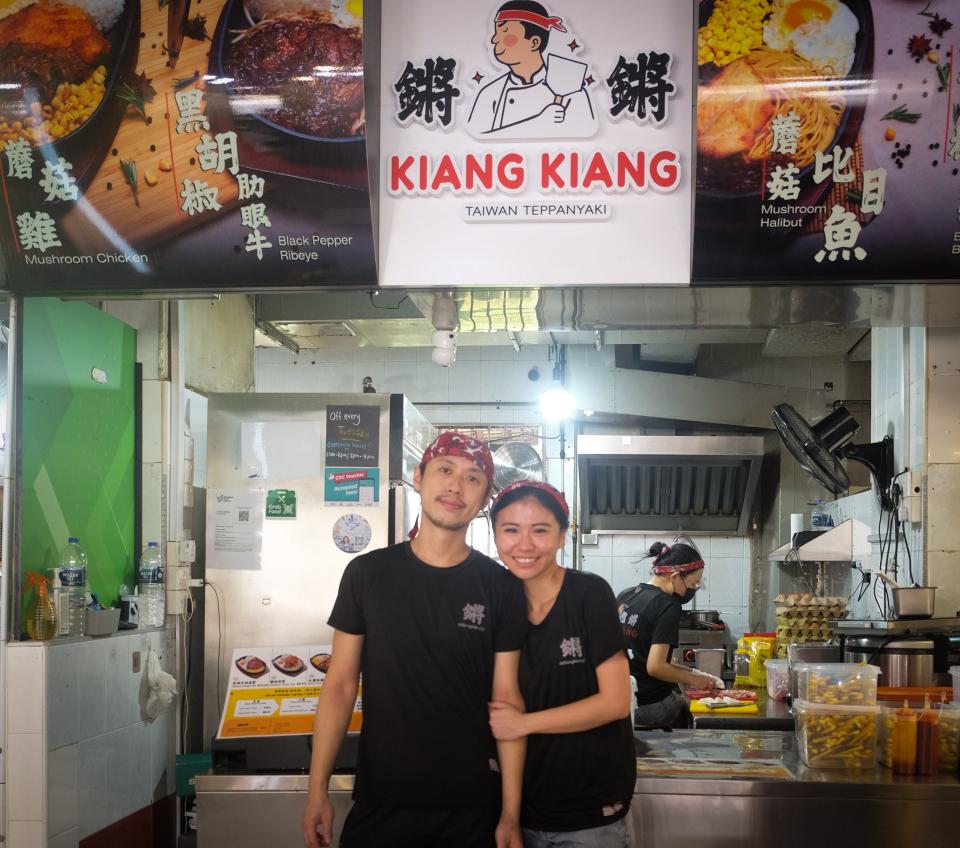

When they first started out, business was slow. They sold around 50 sets — which range between SG$ 8.50 to SG$ 13.50 a piece — each day. They had monthly expenditures to consider, too: Tan estimates that the cost of operating the stall is around SG$21,000 monthly, including rent, which costs around SG$5,500.
But business started to look up when Tan’s videos about her hawker life gained traction on TikTok. Local media also began to cover the business. The fact that the stall owner had worked at Singapore Airlines added a layer of curiosity and drew interest, she said.
On a visit to their food stall on a Friday afternoon in August, I spotted a few customers finishing their final bites of the hot plate dish. It was almost the end of the lunch hour, and the side option of bean sprouts was sold out.
As Hsu cooked the final delivery orders in the kitchen, Tan moved from task to task without a break. I saw her packing orders, pouring sauce into takeaway packets, and chatting with customers.
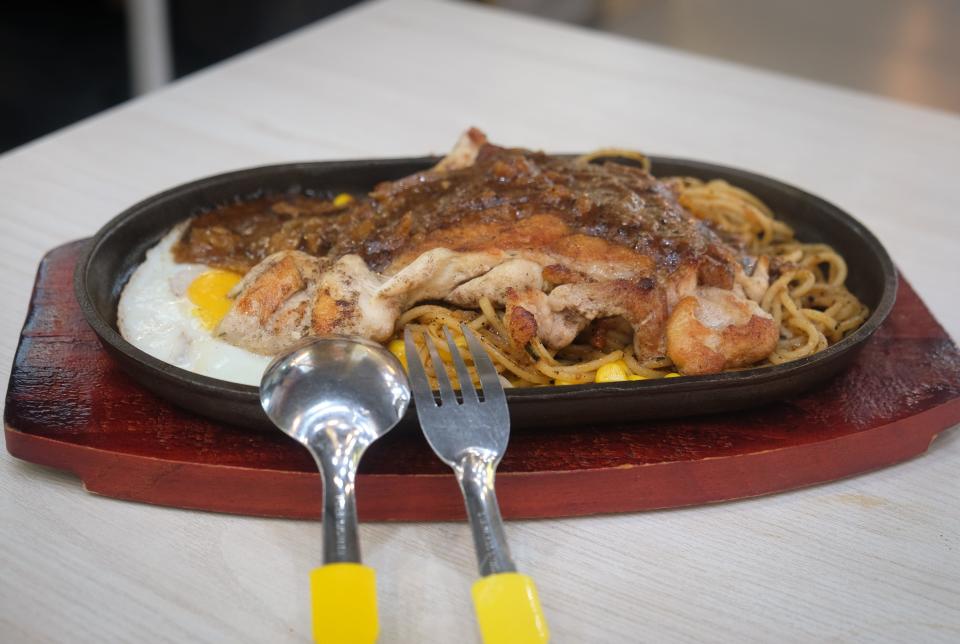

Tan said the skills she gained as a Singapore Girl — a nickname given to the airline’s female flight attendants — have proven helpful in unexpected ways. “I’m used to talking to customers. So, as a hawker, I can make customers feel comfortable,” she said. “I think it’s nice. I mean, you don’t really get that in hawker stalls because people usually just order their food and go,” she said.
The perks of being a hawker
When Tan was a flight attendant, she simply had to report for work, follow instructions, and get paid a regular salary at the end of each month.
But now, Tan gets to be her own boss. While Hsu oversees cooking, Tan handles the cashier, administrative work, accounting, and marketing.
Although Tan doesn’t see herself returning to the life of flying, one thing she does miss is the food.
“I’m not talking about the airplane food,” she said. “I mean the food overseas. You know, biryani in India, The Cheesecake Factory in the US,” she said with a laugh.
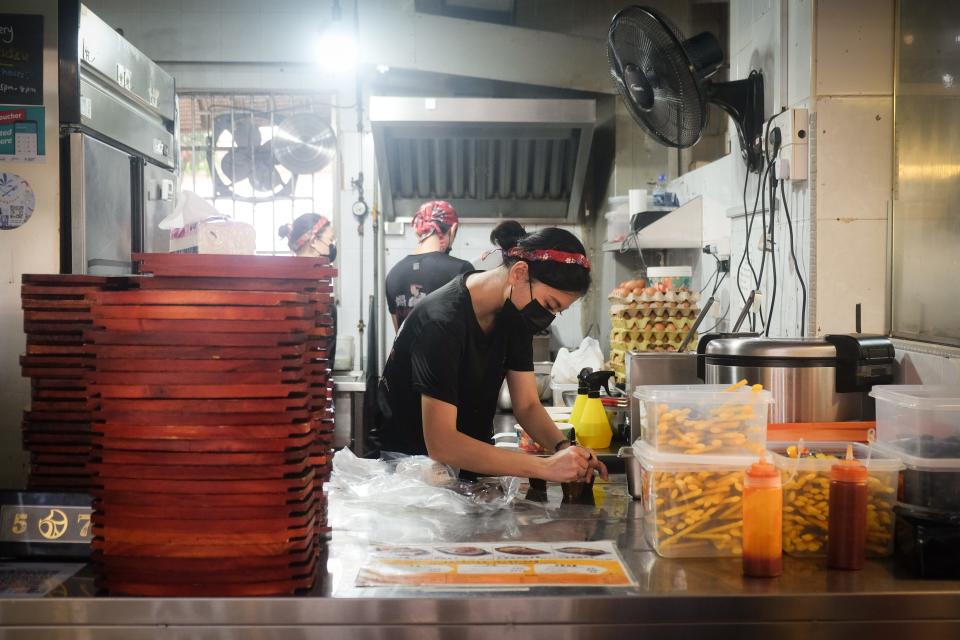

She said she feels pride in being part of a bigger movement to prevent Singapore’s hawker culture from dying.
In 2022, hawker culture was inscribed on the UNESCO Representative List of the Intangible Cultural Heritage of Humanity. According to the National Environment Agency’s website, the median age of hawkers was 60 in 2020 — despite the retirement age in Singapore being 63.
As Tan said, “You’ll need a new generation to help the hawker culture.”
As the buzz from lunch hour began to wind down, Tan started to prepare ingredients for the dinner crowd.
“The hawker lifestyle is challenging, but I think if more youngsters are willing to go through this process, it’s rewarding,” she said.
Read the original article on Business Insider
